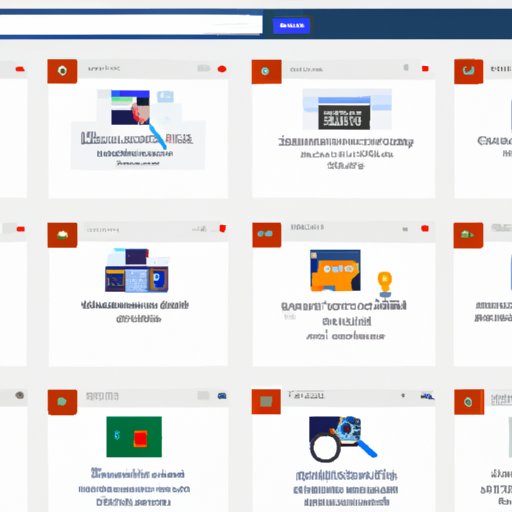Introduction
Searching a website can be a time-consuming and laborious process, especially if you’re dealing with a large amount of data or a complex website structure. To make the task easier, many businesses are now turning to automated search solutions. Automating website searches can help you quickly find what you need and save time on manual tasks. In this article, we’ll explore what automated website search is, the benefits, and provide a step-by-step guide on how to set up an automated search.
What is Website Search Automation?
Website search automation is the process of using software or tools to automatically search a website for specific information. It is designed to reduce the time and effort required to manually search a website, allowing users to quickly find what they need without having to manually input search queries. Automated searches are usually done using a web crawler, which is a program that “crawls” through a website and looks for certain words or phrases. The crawler then returns the results to the user in a structured format, such as a spreadsheet or table.
Benefits of Automating Website Searches
Automating website searches can provide a wide range of benefits, including:
- Reduced time and effort required to manually search a website
- Increased accuracy and precision of results
- Faster search times
- More efficient use of resources
- Improved customer experience
- Lower cost of implementation and maintenance
How to Set Up Automated Searches Using a Step-by-Step Guide
Setting up automated searches requires a few steps. Here’s a step-by-step guide to help you get started:
Step 1: Choose the Right Automation Tool
The first step is to choose the right automation tool for your needs. There are many options available, from free tools to paid solutions. Consider factors such as the complexity of the website you’re searching, the type of data you need to search, and the budget you have available. Once you’ve chosen a tool, you’ll need to install it and configure it according to your requirements.
Step 2: Set Up Your Automated Search
Once the tool is installed and configured, you can begin setting up your automated search. This involves specifying the criteria you want the search to look for, such as specific keywords or phrases. You may also need to specify the areas of the website you want the search to cover, and any other parameters you need. Once you’ve entered all the necessary information, you can start the search.
Different Types of Website Search Automation Available
There are two main types of website search automation available: free tools and paid solutions. Free tools are typically open source and can offer basic functionality, while paid solutions are more feature-rich and often come with customer support. Ultimately, the choice comes down to the needs and budget of the business.

Advantages and Disadvantages of Automating Website Searches
Automating website searches has both advantages and disadvantages. Here are some of the key benefits and drawbacks:
Advantages
- Reduced time and effort required to manually search a website
- Increased accuracy and precision of results
- Faster search times
- More efficient use of resources
- Improved customer experience
- Lower cost of implementation and maintenance
Disadvantages
- Software and tools can be expensive
- Not all websites are compatible with automated search solutions
- Results may not always be accurate
- May require technical expertise to set up and maintain

Examples of Websites That Have Successfully Used Automated Search
Many businesses have successfully implemented automated search solutions. Here are a few examples:
Case Studies
- An online retailer used automated search to quickly analyze customer feedback, helping them identify trends and optimize their product offerings.
- A news organization used automated search to quickly find relevant stories and accurately report on breaking news.
- A legal firm used automated search to quickly locate important documents and reduce the time spent on research.

Tips on Optimizing Your Website Search Automation Results
To get the most out of automated website search, there are a few tips you can follow:
Leverage Keywords
Keywords are essential for optimizing your search results. Make sure to carefully select the most relevant keywords and phrases that accurately describe the information you’re looking for.
Utilize Filters
Filters can help you narrow down your search results and find the exact information you’re looking for. For example, you can use filters to search for specific dates, locations, or topics.
Implement Advanced Features
Many automated search tools offer advanced features, such as natural language processing (NLP) and machine learning (ML). These features can further improve the accuracy and speed of your searches.
Conclusion
Automating website searches can provide many benefits, including reduced time and effort, increased accuracy, faster search times, and improved customer experience. However, it’s important to consider the drawbacks, such as the cost of the tools and the potential for inaccurate results. By following the steps outlined in this article and leveraging the tips provided, you’ll be well on your way to optimizing your website search automation results.
(Note: Is this article not meeting your expectations? Do you have knowledge or insights to share? Unlock new opportunities and expand your reach by joining our authors team. Click Registration to join us and share your expertise with our readers.)
